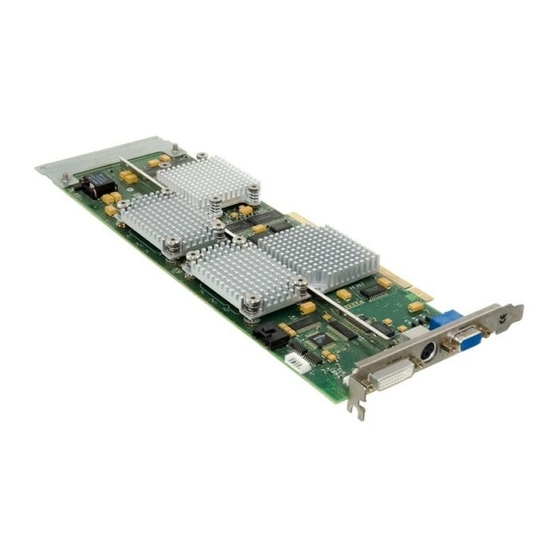
HP P Class 733/800/866MHz / 1GHz Supplementary Manual
Windows graphics accelerators
Hide thumbs
Also See for P Class 733/800/866MHz / 1GHz:
- Administrator's manual (118 pages) ,
- Online manual (29 pages) ,
- Installation manual (27 pages)
Advertisement
Quick Links
Leadership Graphics Technology
hp IA-32
visualize
5
10
fx
and fx
Windows
graphics
accelerators
HP set the standard for Windows NT
with the introduction of the hp visualize fx
quent introduction of the hp visualize fx
further gains in performance at a wide range of price points.
Now, HP continues to evolve its hp visualize family of graphics adapters with the
introduction of the hp visualize fx
5
10
hp fx
and fx
feature industry-leading application performance, with a feature set
typically found on much more expensive high-end graphics workstations. The hard-
ware is designed for Windows NT
support for OpenGL 1.1, GDI, DirectDraw, and Direct3D.
Significant features of the hp fx
• 3D and depth texture mapping for volume visualization and real-time shadows.
• Texture maps up to 16384 × 16384 in size.
• A hardware-accelerated accumulation buffer for full scene antialiasing and
motion blur effects.
• Parallel visibility testing of bounding boxes for fast occlusion culling.
• Support for multiple display syncs for "cave" and "cove" displays.
• Up to 64MB of fully configurable shared framebuffer/texture memory. The
flexible shared memory design allows the user to balance texture map storage
requirements with pixel depth and desktop size.
• Identical software interfaces and device drivers for both the hp fx
graphics accelerators to reduce ISV certification expenses.
• Designed with the entire computer system in mind to maximize high-end 3D
application performance.
®
3D graphics performance and functionality
4
graphics accelerator in 1997. The subse-
+
family for Windows workstations provided
5
10
and hp visualize fx
®
and Windows 2000 Professional
5
10
and fx
:
white
paper
graphics accelerators. The
®
, providing full
5
10
and fx
Advertisement

Summary of Contents for HP P Class 733/800/866MHz / 1GHz
- Page 1 Now, HP continues to evolve its hp visualize family of graphics adapters with the introduction of the hp visualize fx hp fx typically found on much more expensive high-end graphics workstations.
- Page 2 Assuming an average triangle size of 29 bytes mit over 14 million triangles/sec to the graphics device. AGP 2X DMA is in perfect balance with the hp visualize personal workstation. The state of the art 133MHz front side bus provides a gross bandwidth of 1.06GB/sec.
- Page 3 This frees the host CPU, leaving more processing power available for application work. The geometry engines use floating point units based on hp PA-RISC processor tech- nology to achieve maximum floating-point performance.
- Page 4 • 16, 12, and 8 bit indexed textures • Pre-specular texture lighting for better realism Since textures are stored in the same block of memory as the framebuffer, desktop size, pixel format, and texture format determine the maximum texture size. The tex- ture processor supports texture sizes of up to 16384 x 16384.
-
Page 5: Memory Architecture
1920 × 1080 1920 × 1080 1920 × 1200 1920 × 1200 In addition to the video formats listed above, the hp fx video formats and timings via the display properties dialog box. Memory Architecture The hp fx device driver manages the memory to satisfy a broad range of framebuffer configura- tions and store memory-intensive texture maps. - Page 6 • The hp draw array set extension, which allows rendering of multiple individual primitives through the vertex array feature. • HP extensions for visibility testing, which can be used directly by an OpenGL application, or indirectly via the DirectModel or Fahrenheit APIs.
- Page 7 Paletted textures, texture color tables * 48MB available at 1280 x1024, True Color double-buffered resolution and 24 bit Z-buffer. to the hp fx and fx and fx represent an evolution of the previous hp fx hp fx / fx Graphics Accelerators 18MB SGRAM 1600 ×...
- Page 8 Windows, Windows NT and Windows 2000 Professional are U.S. registered trademarks of Microsoft Corporation. UNIX is a registered trademark in the United States and other countries, licensed exclusively through X/Open Company limited. Intel and Pentium are registered trademarks of Intel Corporation. Information in this document is subject to change without notice.






